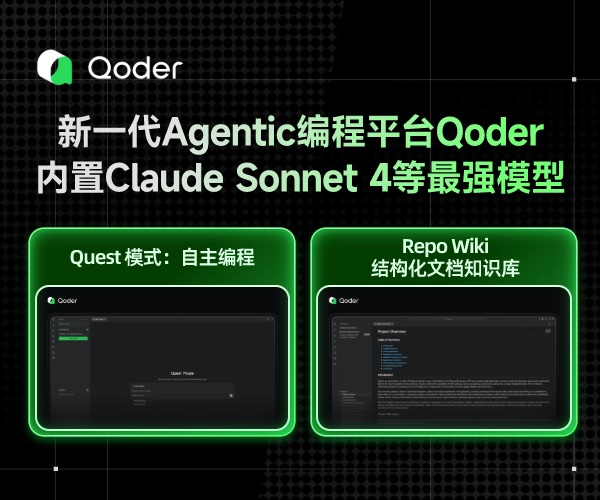深入淺出Win32多線程程序設計之線程控制
|
作者:宋寶華出處:天極開發責任編輯: 方舟 [ 2005-12-15 09:04 ] WIN32線程控制主要實現線程的創建、終止、掛起和恢復等操作,這些操作都依賴于WIN32提供的一組API和具體編譯器的C運行時庫函數。 WIN32線程控制主要實現線程的創建、終止、掛起和恢復等操作,這些操作都依賴于WIN32提供的一組API和具體編譯器的C運行時庫函數。 1.線程函數 在啟動一個線程之前,必須為線程編寫一個全局的線程函數,這個線程函數接受一個32位的LPVOID作為參數,返回一個UINT,線程函數的結構為: UINT ThreadFunction(LPVOID pParam) { //線程處理代碼 return0; } 在線程處理代碼部分通常包括一個死循環,該循環中先等待某事情的發生,再處理相關的工作: while(1) { WaitForSingleObject(…,…);//或WaitForMultipleObjects(…) //Do something } 一般來說,C++的類成員函數不能作為線程函數。這是因為在類中定義的成員函數,編譯器會給其加上this指針。請看下列程序: #include "windows.h" #include <process.h> class ExampleTask { public: void taskmain(LPVOID param); void StartTask(); }; void ExampleTask::taskmain(LPVOID param) {} void ExampleTask::StartTask() { _beginthread(taskmain,0,NULL); } int main(int argc, char* argv[]) { ExampleTask realTimeTask; realTimeTask.StartTask(); return 0; } 程序編譯時出現如下錯誤: error C2664: '_beginthread' : cannot convert parameter 1 from 'void (void *)' to 'void (__cdecl *)(void *)' None of the functions with this name in scope match the target type 再看下列程序: #include "windows.h" #include <process.h> class ExampleTask { public: void taskmain(LPVOID param); }; void ExampleTask::taskmain(LPVOID param) {} int main(int argc, char* argv[]) { ExampleTask realTimeTask; _beginthread(ExampleTask::taskmain,0,NULL); return 0; } 程序編譯時會出錯: error C2664: '_beginthread' : cannot convert parameter 1 from 'void (void *)' to 'void (__cdecl *)(void *)' None of the functions with this name in scope match the target type 如果一定要以類成員函數作為線程函數,通常有如下解決方案: (1)將該成員函數聲明為static類型,去掉this指針; 我們將上述二個程序改變為: #include "windows.h" #include <process.h> class ExampleTask { public: void static taskmain(LPVOID param); void StartTask(); }; void ExampleTask::taskmain(LPVOID param) {} void ExampleTask::StartTask() { _beginthread(taskmain,0,NULL); } int main(int argc, char* argv[]) { ExampleTask realTimeTask; realTimeTask.StartTask(); return 0; } 和 #include "windows.h" #include <process.h> class ExampleTask { public: void static taskmain(LPVOID param); }; void ExampleTask::taskmain(LPVOID param) {} int main(int argc, char* argv[]) { _beginthread(ExampleTask::taskmain,0,NULL); return 0; } 均編譯通過。 將成員函數聲明為靜態雖然可以解決作為線程函數的問題,但是它帶來了新的問題,那就是static成員函數只能訪問static成員。解決此問題的一種途徑是可以在調用類靜態成員函數(線程函數)時將this指針作為參數傳入,并在改線程函數中用強制類型轉換將this轉換成指向該類的指針,通過該指針訪問非靜態成員。 (2)不定義類成員函數為線程函數,而將線程函數定義為類的友元函數。這樣,線程函數也可以有類成員函數同等的權限; 我們將程序修改為: #include "windows.h" #include <process.h> class ExampleTask { public: friend void taskmain(LPVOID param); void StartTask(); }; void taskmain(LPVOID param) { ExampleTask * pTaskMain = (ExampleTask *) param; //通過pTaskMain指針引用 } void ExampleTask::StartTask() { _beginthread(taskmain,0,this); } int main(int argc, char* argv[]) { ExampleTask realTimeTask; realTimeTask.StartTask(); return 0; } (3)可以對非靜態成員函數實現回調,并訪問非靜態成員,此法涉及到一些高級技巧,在此不再詳述。 2.創建線程 進程的主線程由操作系統自動生成,Win32提供了CreateThread API來完成用戶線程的創建,該API的原型為: HANDLE CreateThread( LPSECURITY_ATTRIBUTES lpThreadAttributes,//Pointer to a SECURITY_ATTRIBUTES structure SIZE_T dwStackSize, //Initial size of the stack, in bytes. LPTHREAD_START_ROUTINE lpStartAddress, LPVOID lpParameter, //Pointer to a variable to be passed to the thread DWORD dwCreationFlags, //Flags that control the creation of the thread LPDWORD lpThreadId //Pointer to a variable that receives the thread identifier ); 如果使用C/C++語言編寫多線程應用程序,一定不能使用操作系統提供的CreateThread API,而應該使用C/C++運行時庫中的_beginthread(或_beginthreadex),其函數原型為: uintptr_t _beginthread( void( __cdecl *start_address )( void * ), //Start address of routine that begins execution of new thread unsigned stack_size, //Stack size for new thread or 0. void *arglist //Argument list to be passed to new thread or NULL ); uintptr_t _beginthreadex( void *security,//Pointer to a SECURITY_ATTRIBUTES structure unsigned stack_size, unsigned ( __stdcall *start_address )( void * ), void *arglist, unsigned initflag,//Initial state of new thread (0 for running or CREATE_SUSPENDED for suspended); unsigned *thrdaddr ); _beginthread函數與Win32 API 中的CreateThread函數類似,但有如下差異: (1)通過_beginthread函數我們可以利用其參數列表arglist將多個參數傳遞到線程; (2)_beginthread 函數初始化某些 C 運行時庫變量,在線程中若需要使用 C 運行時庫。 3.終止線程 線程的終止有如下四種方式: (1)線程函數返回; (2)線程自身調用ExitThread 函數即終止自己,其原型為: VOID ExitThread(UINT fuExitCode ); 它將參數fuExitCode設置為線程的退出碼。 注意:如果使用C/C++編寫代碼,我們應該使用C/C++運行時庫函數_endthread (_endthreadex)終止線程,決不能使用ExitThread! _endthread 函數對于線程內的條件終止很有用。例如,專門用于通信處理的線程若無法獲取對通信端口的控制,則會退出。 (3)同一進程或其他進程的線程調用TerminateThread函數,其原型為: BOOL TerminateThread(HANDLE hThread,DWORD dwExitCode); 該函數用來結束由hThread參數指定的線程,并把dwExitCode設成該線程的退出碼。當某個線程不再響應時,我們可以用其他線程調用該函數來終止這個不響應的線程。 (4)包含線程的進程終止。 最好使用第1種方式終止線程,第2~4種方式都不宜采用。 4.掛起與恢復線程 當我們創建線程的時候,如果給其傳入CREATE_SUSPENDED標志,則該線程創建后被掛起,我們應使用ResumeThread恢復它: DWORD ResumeThread(HANDLE hThread); 如果ResumeThread函數運行成功,它將返回線程的前一個暫停計數,否則返回0x FFFFFFFF。 對于沒有被掛起的線程,程序員可以調用SuspendThread函數強行掛起之: DWORD SuspendThread(HANDLE hThread); 一個線程可以被掛起多次。線程可以自行暫停運行,但是不能自行恢復運行。如果一個線程被掛起n次,則該線程也必須被恢復n次才可能得以執行。 5.設置線程優先級 當一個線程被首次創建時,它的優先級等同于它所屬進程的優先級。在單個進程內可以通過調用SetThreadPriority函數改變線程的相對優先級。一個線程的優先級是相對于其所屬進程的優先級而言的。 BOOL SetThreadPriority(HANDLE hThread, int nPriority); 其中參數hThread是指向待修改優先級線程的句柄,線程與包含它的進程的優先級關系如下: 線程優先級 = 進程類基本優先級 + 線程相對優先級 進程類的基本優先級包括: (1)實時:REALTIME_PRIORITY_CLASS; (2)高:HIGH _PRIORITY_CLASS; (3)高于正常:ABOVE_NORMAL_PRIORITY_CLASS; (4)正常:NORMAL _PRIORITY_CLASS; (5)低于正常:BELOW_ NORMAL _PRIORITY_CLASS; (6)空閑:IDLE_PRIORITY_CLASS。 我們從Win32任務管理器中可以直觀的看到這六個進程類優先級,如下圖:  線程的相對優先級包括: (1)空閑:THREAD_PRIORITY_IDLE; (2)最低線程:THREAD_PRIORITY_LOWEST; (3)低于正常線程:THREAD_PRIORITY_BELOW_NORMAL; (4)正常線程:THREAD_PRIORITY_ NORMAL (缺省); (5)高于正常線程:THREAD_PRIORITY_ABOVE_NORMAL; (6)最高線程:THREAD_PRIORITY_HIGHEST; (7)關鍵時間:THREAD_PRIOTITY_CRITICAL。 下圖給出了進程優先級和線程相對優先級的映射關系:  例如: HANDLE hCurrentThread = GetCurrentThread(); //獲得該線程句柄 SetThreadPriority(hCurrentThread, THREAD_PRIORITY_LOWEST); 6.睡眠 VOID Sleep(DWORD dwMilliseconds); 該函數可使線程暫停自己的運行,直到dwMilliseconds毫秒過去為止。它告訴系統,自身不想在某個時間段內被調度。 7.其它重要API 獲得線程優先級 一個線程被創建時,就會有一個默認的優先級,但是有時要動態地改變一個線程的優先級,有時需獲得一個線程的優先級。 Int GetThreadPriority (HANDLE hThread); 如果函數執行發生錯誤,會返回THREAD_PRIORITY_ERROR_RETURN標志。如果函數成功地執行,會返回優先級標志。 獲得線程退出碼 BOOL WINAPI GetExitCodeThread( HANDLE hThread, LPDWORD lpExitCode ); 如果執行成功,GetExitCodeThread返回TRUE,退出碼被lpExitCode指向內存記錄;否則返回FALSE,我們可通過GetLastError()獲知錯誤原因。如果線程尚未結束,lpExitCode帶回來的將是STILL_ALIVE。 獲得/設置線程上下文 BOOL WINAPI GetThreadContext( HANDLE hThread, LPCONTEXT lpContext ); BOOL WINAPI SetThreadContext( HANDLE hThread, CONST CONTEXT *lpContext ); 由于GetThreadContext和SetThreadContext可以操作CPU內部的寄存器,因此在一些高級技巧的編程中有一定應用。譬如,調試器可利用GetThreadContext掛起被調試線程獲取其上下文,并設置上下文中的標志寄存器中的陷阱標志位,最后通過SetThreadContext使設置生效來進行單步調試。 8.實例 以下程序使用CreateThread創建兩個線程,在這兩個線程中Sleep一段時間,主線程通過GetExitCodeThread來判斷兩個線程是否結束運行: #define WIN32_LEAN_AND_MEAN #include <stdio.h> #include <stdlib.h> #include <windows.h> #include <conio.h> DWORD WINAPI ThreadFunc(LPVOID); int main() { HANDLE hThrd1; HANDLE hThrd2; DWORD exitCode1 = 0; DWORD exitCode2 = 0; DWORD threadId; hThrd1 = CreateThread(NULL, 0, ThreadFunc, (LPVOID)1, 0, &threadId ); if (hThrd1) printf("Thread 1 launched\n"); hThrd2 = CreateThread(NULL, 0, ThreadFunc, (LPVOID)2, 0, &threadId ); if (hThrd2) printf("Thread 2 launched\n"); // Keep waiting until both calls to GetExitCodeThread succeed AND // neither of them returns STILL_ACTIVE. for (;;) { printf("Press any key to exit..\n"); getch(); GetExitCodeThread(hThrd1, &exitCode1); GetExitCodeThread(hThrd2, &exitCode2); if ( exitCode1 == STILL_ACTIVE ) puts("Thread 1 is still running!"); if ( exitCode2 == STILL_ACTIVE ) puts("Thread 2 is still running!"); if ( exitCode1 != STILL_ACTIVE && exitCode2 != STILL_ACTIVE ) break; } CloseHandle(hThrd1); CloseHandle(hThrd2); printf("Thread 1 returned %d\n", exitCode1); printf("Thread 2 returned %d\n", exitCode2); return EXIT_SUCCESS; } /* * Take the startup value, do some simple math on it, * and return the calculated value. */ DWORD WINAPI ThreadFunc(LPVOID n) { Sleep((DWORD)n*1000*2); return (DWORD)n * 10; } 通過下面的程序我們可以看出多線程程序運行順序的難以預料以及WINAPI的CreateThread函數與C運行時庫的_beginthread的差別: #define WIN32_LEAN_AND_MEAN #include <stdio.h> #include <stdlib.h> #include <windows.h> DWORD WINAPI ThreadFunc(LPVOID); int main() { HANDLE hThrd; DWORD threadId; int i; for (i = 0; i < 5; i++) { hThrd = CreateThread(NULL, 0, ThreadFunc, (LPVOID)i, 0, &threadId); if (hThrd) { printf("Thread launched %d\n", i); CloseHandle(hThrd); } } // Wait for the threads to complete. Sleep(2000); return EXIT_SUCCESS; } DWORD WINAPI ThreadFunc(LPVOID n) { int i; for (i = 0; i < 10; i++) printf("%d%d%d%d%d%d%d%d\n", n, n, n, n, n, n, n, n); return 0; } 運行的輸出具有很大的隨機性,這里摘取了幾次結果的一部分(幾乎每一次都不同):    如果我們使用標準C庫函數而不是多線程版的運行時庫,則程序可能輸出"3333444444"這樣的結果,而使用多線程運行時庫后,則可避免這一問題。 下列程序在主線程中創建一個SecondThread,在SecondThread線程中通過自增對Counter計數到1000000,主線程一直等待其結束: #include <Win32.h> #include <stdio.h> #include <process.h> unsigned Counter; unsigned __stdcall SecondThreadFunc(void *pArguments) { printf("In second thread...\n"); while (Counter < 1000000) Counter++; _endthreadex(0); return 0; } int main() { HANDLE hThread; unsigned threadID; printf("Creating second thread...\n"); // Create the second thread. hThread = (HANDLE)_beginthreadex(NULL, 0, &SecondThreadFunc, NULL, 0, &threadID); // Wait until second thread terminates WaitForSingleObject(hThread, INFINITE); printf("Counter should be 1000000; it is-> %d\n", Counter); // Destroy the thread object. CloseHandle(hThread); } ?
|
|


